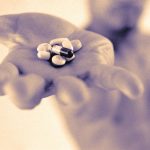
Bucking a longstanding upward trend, new data shows that the percentage of Americans taking any prescription drug has fallen slightly over the past decade. Still, nearly half — 45.8% — of Americans said they took at least one prescription medicine over the past month, according to a national survey conducted in 2015-2016. That’s a slight dip from the 48.3% of Americans — children and adults — who reported taking a prescribed drug in the same survey conducted in 2007-2008, according to a team from the U.S. Centers for Disease Control and Prevention’s National Center for Health Statistics (NCHS). The drop in prescription use reverses a trend that had persisted since the 1990s, the study authors said. It’s not clear why fewer Americans are taking prescription meds now than a decade before, although the researchers cite a possible “decline in the use of inappropriate or ineffective therapies.” The new statistics showed that males were less likely to be taking prescription meds than females (41.5% versus 50%, respectively). But the gender divide varied greatly, depending on age group. For example, among children under the age of 12, boys (22%) were more likely to take a prescription drug than girls (nearly 14%), a trend driven largely by use of drugs for attention-deficit/hyperactivity disorder (ADHD). But by the time people reached adulthood (ages 20 to 59), women were more… read on >































-300x200.jpg)



